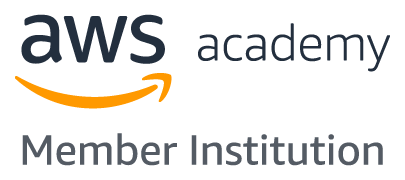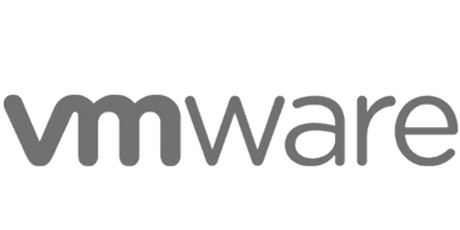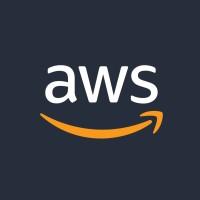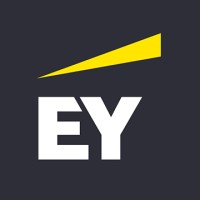

Post-Graduate Program in Cloud Computing
Build Your Career Skill Set With Cloud Computing
- Live Mentorship-Driven Program
- 6 Months Online
360˚Understanding of Cloud Ecosystem

AWS
Amazon Web Services

Azure
Windows Azure

GCP
Google Cloud Platform
1000+ Careers Transformed

Ashok Kumar Natarajan
Senior Technical Account Manager
Awesome learning model and process helped me clear the elaborate interviews of Amazon


Sandhyarani Leishnagthem
Business System Analyst/PM
Well-structured program outline that covers the modules that I was looking for : AWS, AZURE, GCP, DevOps Containers


Omar A Omar
Site Reliability Engineer
The program led me to earn 2 professional certificates, AWS Solutions Architect Associate and Azure -900 certificate.


Elmer Ibayan
Consultant
Taking this course gave me a better picture of the actual cloud landscape


Hannan Javid
Excellent opportunity for the IT professional looking to upscale their career path


Amit Kashikar
Data Governance Analyst/Architect
This course helped me transition at cloud based data services


Kunal Kaul
Data Analyst
I was able to grab a new job with one of the big finance company in Melbourne, Australia for a cloud project


Don Tuaro
Product Owner and Engineer
Dedicated program support helped me stay on track & get Certified


Anson Thomas
Principal Site Reliability Engineer
One of the most rewarding programs, with hands-on labs and projects with live weekend mentor sessions

Rigo Pedraza
Information Technology Project Manager
This program along with training definitely did help me to find a new job


Roshini G
Associate Technical Support Engineer
I got hands-on experience in whatever I learnt


Uzma Jilani
Forward Deployed Engineer
I started passing interviews for cloud data engineering roles & landed a new job

Why Choose Our Cloud Computing Program
90+ cloud services covered in curriculum
Learn in-depth cloud technology with in-demand tools and software, offered by AWS, Azure and Google Cloud.
VIEW CURRICULUM
Live mentorship
sessions
A certified professional from the industry mentors you through the entire program.
VIEW EXPERIENCE
Networking and program
support
A dedicated program manager guides you through any issue related to the program — dates, assignments, fees, and application.
VIEW BATCH PROFILE
Dedicated career
support
As leaders in the technology space, we provide personal mentors, networking and program support, and a university-grade syllabus.

Join the Most Comprehensive Cloud Computing Program & Transform your Career
Certificate from UT Austin

#6 Information Systems Graduate Programs, U.S. News & World report, 2022
#6 Executive Education - Custom Programs, Financial Times, 2022
For any feedback & queries regarding the program, please reach out to us at utcloudcomputing@mygreatlearning.com

#6
Executive Education - Custom Programs

Financial Times,
2022
#6
Information Systems Graduate Programs

US News & World Report, 2022
Comprehensive Curriculum
PG Program in Cloud Computing has the most comprehensive curriculum with 90+ services being covered.
300+ hrs
Learning content
90+
Cloud services
The Foundations module is the first section in this course that will empower you with the fundamentals of Cloud. All the concepts taught in this module will aid you in building a solid foundation. By the end of this foundation module, you will be comfortable with basic cloud computing terms.
- Cloud computing - Introduction
- Cloud case studies
This section is a pre-work training that will take you through Introduction to Cloud computing and Cloud case studies.
- Introduction to Virtualization (VM’s and Containers)
- Service Delivery & Deployment Models
- Cloud Attributes and Services Taxonomy
- Introduction to Infrastructure Automation
- Key Aspects of IaaS, PaaS and SaaS
This section talks about the fundamentals of cloud computing that covers virtualization, delivery and deployment models, IaaS, PaaS, SaaS, and many more.
Virtualization, as the name suggests, is the creation of virtual machines (VM’s), such as servers, desktops, OS, storage devices, networks, and many more.
Containers are standard packages of software that consist of all the necessary elements required to run in any environment.
A cloud service delivery model determines a specific, pre-packaged combination of IT resources that a cloud service provider offers. Its types include IaaS, PaaS, and SaaS.
A cloud deployment model is a particular configuration of environmental parameters such as the accessibility and ownership of the deployment infrastructure and storage size. Its types include Public, Private, Hybrid, and Community Cloud.
This chapter teaches you several critical cloud attributes and services taxonomy.
Infrastructure Automation uses technology that performs tasks with reduced human assistance to control the software, hardware, networking components, OS, and data storage components in order to deliver information technology services and solutions.
IaaS stands for Infrastructure as a Service, a pay-as-you-go service where a third-party vendor offers infrastructure services, like storage and virtualization, via a cloud, through the internet.
PaaS stands for Platform as a Service, a cloud computing service that uses virtualization in order to provide application development platforms to developers or various companies.
SaaS stands for Software as a Service, which is also called a cloud application service. It is the most extensive Cloud Computing service, which delivers an entire application managed by a provider via a web browser.
To begin with the Cloud Computing training, you will first learn AWS (Amazon Web Services) and its various specializations, such as AWS DevOps, AWS managed services, and much more.
- Compute, Load Balancing, Autoscaling
- Storage, Replication and Life Cycle Management
- AWS Organization and Identity
- Networking and Data migration
Here, you will be introduced to Cloud Computing on AWS, where you will learn Load Balancing, Compute and Storage Services, AWS Organization, and much more.
Compute services are vital resources enabling you to carry out computational abilities through various instructions used by applications and systems. Ex: Amazon Elastic Compute Cloud (Amazon EC2).
Load Balancing is used for automatically distributing incoming application traffic across several targets, like Amazon EC2 instances, IP addresses, containers, Lambda functions, and virtual appliances.
Autoscaling is used to monitor your applications and automatically adjust capacity in order to maintain steady, predictable performance at the least possible expenses. With the help of AWS Auto Scaling, it is easy to set up application scaling for numerous resources across various services in minutes.
AWS offers a wide range of cloud storage services for users to store, access, govern, and analyze their data in order to reduce costs, increase agility, and advance innovation.
Replication empowers automatic, asynchronous copying of objects around Amazon S3 buckets.
Life Cycle Management is used such that objects are stored cost-effectively in every part of their lifecycle.
AWS Organization, an account management service, is used to let you consolidate numerous AWS accounts into an organization, which you can create and centrally manage.
AWS Identity and Access Management (IAM) is used to let you manage access to AWS services and resources securely.
AWS offers the broadest networking services with the highest reliability, security features, and performance globally.
Database Migration Service in AWS aids you in migrating your databases to AWS with virtually no downtime.
- Databases (RDS, DynamoDB)
- Web Application Firewall
- SNS, SQS, Cloudwatch
- Athena, Quicksight and Kinesis
- Serverless (Lambda)
- AWS Cognitive Services (Rekognition, Comprehend & Polly)
Here, you will learn several managed services on AWS, such as Databases, Firewall, Cloudwatch, Athena, Serverless, and much more.
Amazon RDS, known as Amazon Relational Database Service, is a managed SQL database service by AWS that helps in hardware provisioning, setting up database, migration, patching, backups, and recovery.
Amazon DynamoDB, a NoSQL database service by AWS, lets users have the comforts of autoscaling, in-memory caching, built-in security, backup, and restore options for all the internet-scale applications.
Web Application Firewall in AWS (AWS WAF) protects your web applications or APIs against some common web exploits and bots, which might affect availability, compromise security, or consume enormous resources.
Amazon SNS (Amazon Simple Notification Service), a fully managed messaging service, is used for both application-to-application (A2A) and application-to-person (A2P) communication.
Amazon SQS (Simple Queue Service), a fully managed message queuing service, enables you to decouple and scale microservices, distributed systems, and also serverless applications.
Amazon CloudWatch, a monitoring service in AWS, is developed for DevOps engineers, IT managers and developers, and site reliability engineers (SREs).
Amazon Athena is a serverless and interactive query service, making it easy to analyze data in Amazon S3 (cloud storage service) with the help of standard SQL.
Amazon QuickSight is a serverless, scalable, embeddable, machine learning-powered business intelligence (BI) service, which is built for the cloud and allows you to easily create and publish interactive BI dashboards, including machine learning-powered insights.
Amazon Kinesis lets you ingest, buffer, and process streaming data in real-time so that you can derive insights in mere seconds or minutes rather than hours or days.
AWS Lambda, a serverless compute service, allows you to run code without provisioning or managing servers.
Amazon Rekognition, an AWS service, makes it pretty simple to add image analysis to your applications.
Amazon Polly, an AWS service, helps in turning text into lifelike speech, which lets you create applications that talk and build wholly new categories of speech-enabled products.
Amazon Comprehend is a Natural Language Processing (NLP) service, which makes use of machine learning to reveal information in unstructured data.
- Docker
- Elastic Container Service (ECS)
- Deployment Pipeline (AWS Code Commit, AWS Code Deploy, AWS Code Pipeline)
- CloudFormation
- Terraform
In this next section, you will learn how to work with Containers and AWS DevOps, including topics like Docker, ECS, Deployment Pipeline, CloudFormation, and Terraform.
Docker, an open and lightweight container, is used to develop, ship, and run applications.
ECS is a fully managed container orchestration service that quickly enables the deployment, management, and scalability of containerized applications.
AWS CodeCommit is a highly scalable, secure, managed source control service, which hosts private Git repositories.
AWS CodeDeploy, a fully managed deployment service, helps you automate software deployments to various compute services.
AWS CodePipeline, a fully managed continuous delivery service, automates your release pipelines for quick and reliable application and infrastructure updates.
CloudFormation is a service that lets you model and set up your AWS resources, so you can spend less time managing AWS resources and more time focusing on your AWS applications.
Terraform, similar to Cloud Formation, is an “Infrastructure as Code (IaC)” tool that enables you to create, update, and version your AWS infrastructure.
- Data Architecture and Serverless approach
- Setting up a cloud based development environment
- Data streaming and data analytics on cloud
- Setting up Kinesis data stream
- Platform as a service - Elastic Beanstalk
- Step Functions
- Elasticsearch
Moving ahead, you will learn enterprise cloud solutions, including topics such as data architecture, data streaming, setting up a cloud-based development environment, and much more.
Here, you will learn about various concepts within data architecture and the serverless approach.
Here, you will learn to set up a cloud-based development environment with a demo.
This chapter teaches you the basics of data streaming and data analytics on the cloud.
This chapter teaches you the procedure to set up a Kinesis data stream, which is a hugely scalable and durable real-time data streaming service.
Here, you will learn how to deploy an application to Elastic Beanstalk, an example of Platform as a Service (PaaS).
AWS Step Functions, a low-code visual workflow service, is used for organizing AWS services, automating business processes, and building serverless applications.
Elasticsearch is an open-source search and analytics engine for use cases like log analytics, real-time application monitoring, and clickstream analytics.
- Networking
- Managed Services Overview
- Security
In this section of AWS specialization, you will learn about Solutions Architect roles, like Networking, Manages Services, and Security.
AWS Networking Services allow users to separate their cloud infrastructure, accelerate workload requests, and connect the physical network to personal private virtual networks. Examples include Amazon VPC, Amazon CloudFront, Elastic Load Balancing, and many more.
AWS Managed Services (AMS) allows users to operate their AWS infrastructure more efficiently and securely.
AWS Cloud Security Services aid in protecting your data, accounts, and workloads from unauthorized access. Examples include AWS IAM, AWS Secrets Manager, and much more.
- Architecture & DevOps
- Platforms
- Data & Databases
- Web, Mobile & Gaming
In the last section of AWS specialization, you will learn about Application Developer roles, like Architecture, DevOps, Database, and Gaming.
Here, you will learn all the concepts of AWS architecture and DevOps.
Here, you will learn about various cloud platforms in AWS.
This chapter teaches you about the handling of data and databases in AWS.
This chapter covers various AWS applications in web, mobile, and gaming.
To begin with the next module of the Post Graduate Program in Cloud Computing, you will learn Microsoft Azure and its various services, such as Blob, VNet, Azure AD, Azure DevOps, Cosmos DB, Azure ML Services, and much more.
- Introduction to Azure & its services
- Azure Virtual Machines (Networking components, Configuring high availability, Scale sets, Autoscaling, etc.)
- Storage (Blob Storage, Azure Files)
- Virtual Networking (Networking Options, VNet Peering, VNet to VNet setup)
- Active Directory (Basics on Azure AD & AD connect)
- Azure Resource Manager (Building ARM template, Powershell, CLI, Cloud shell usage)
- Azure Cost Management (Αlerts, Budgeting, Pricing Calculator)
The first section of this Azure introduction will teach you all the fundamentals of Azure and its numerous services.
Like AWS, Azure is another cloud service developed by Microsoft. Here, you will learn about various Azure services.
Azure Virtual Machines (VMs) are several on-demand, scalable computing resources offered by Azure. They give you the flexibility of virtualization without the need to buy and maintain the physical hardware.
Azure Blob (Binary Large Object) Storage aids you in creating data lakes for your analytical requirements and offers storage to build powerful cloud-native and mobile applications.
Azure Files provides fully managed file shares in the cloud that are accessible through the industry-standard Server Message Block (SMB) protocol or Network File System (NFS) protocol.
An Azure Virtual Network (VNet) is a representation of one’s own network in the cloud. VNet is a logical isolation of the Azure cloud, which is dedicated to your subscription.
Azure Active Directory (Azure AD) is a cloud-based identity and access management service (Microsoft’s IAM), which lets users sign in and access resources from various internal and external resources.
Here, you will gain an understanding of how to control the cost management of Azure services via alerts, budgeting, and pricing calculators.
This is Azure’s deployment and management service, which provides a management layer that lets you create, update, and delete resources in your Azure account.
- Load Balancing (Azure Load Balancer, Application Gateway, WAF, Azure Traffic Manager)
- Network Security (Network Security Groups, Azure Bastion, Firewall)
- Security & Governance Solutions
In the next section, you will learn about Azure Security Solutions, covering Load Balancing, Network Security, and Security & Governance Solutions.
Load Balancing is referred to evenly distributing load, i.e., incoming network traffic, across a group of backend servers or resources.
Here, you will learn about load balancers in Azure, such as Azure Load Balancer, Application Gateway, WAF, and Azure Traffic Manager.
Network Security is the method to protect resources from unauthorized access or any attacks by applying controls to network traffic.
Here, you will be briefed about an overview of Azure Network Security, such as Network Security Groups, Azure Bastion, and Firewall.
Here, you will learn various other security and governance solutions in Azure.
- Azure App Services (Web Apps, Azure Functions, Logic Apps)
Azure App Services allows you to create apps faster with a unique cloud service in order to quickly and easily create enterprise-ready web and mobile apps for any device or platform and deploy them on a reliable and scalable cloud infrastructure. - API Management
API Management in Azure is a fully managed service that lets customers publish, transform, maintain, monitor, and secure APIs. - Container-based applications
Here, you will learn the process of using end-to-end developer and CI/CD tools for developing, updating, and deploying your containerized applications. - Messaging & Event-Based Services (Service Bus, Event Hub, Event Grid)
Here, you will learn various messaging and event-based services on Azure, such as Service Bus, Event Hub, and Event Grid. - Azure DevOps
Azure DevOps offers developer services for support teams in order to plan work, collaborate on the development of code, and build and deploy applications. - Monitoring (Monitoring options, Metrics, Service Health, Activity Log, Alerts, Configuring Log Analytics and Diagnostic logging, Configuring App Insights)
Monitoring services in Azure let you monitor the performance and availability of your Azure environment, which provides you with insights and telemetry into your cloud workloads.
Moving forward, this module will teach all the available Azure solutions for apps, such as Azure Functions, API management, Azure DevOps, Messaging, Event-based, and Monitoring services.
- Cosmos DB (Introduction, Working with Core SQL API, Global distribution (replicas), Throughput, Consistency, Partitioning, Connect via Azure function/VM2)
Azure Cosmos DB is an extensively managed NoSQL database that is used for modern app development. It can take care of automatic management, updates, and patching. - SQL Database (Database options & models)
An SQL (Structured Query Language) database is a collection of tables storing a specific set of structured data. Here, you will learn more about SQL database options and models. - Data Services Intro (Azure Data Factory, Synapse, Databricks, Stream Analytics)
Here, you will be introduced to various data services in Azure, such as Azure Data Factory, Synapse, Databricks, and Stream Analytics.
Followed by Azure Solutions, you will then learn about Azure Data Platforms that cover topics such as Cosmos DB, SQL Database, and Data Services Intro.
- Azure ML Services
- AI Services Offered on Azure
- Azure ML Studio
- Azure ML & Loading data
- Data Manipulation
- Visualizing Categorical Data
- Visualizing Numerical Data, etc.
Azure ML Services is a self-paced module, which will cover topics like Azure ML Studio, Data Manipulation, Visualizing categorical and numerical data, and many more.
Here, you will grasp some knowledge on how to create and manage Machine Learning solutions for Azure in order to help Machine Learning Engineers or Data Scientists leverage their existing data processing skills and model development skills and frameworks.
Here, you will learn how to implement various Azure AI services, which will aid in modernizing business processes, accelerating development, improving customer experience, and much more.
Azure ML Studio is a web portal or workspace for Data Scientists or Machine Learning Engineers, where they create, build, train various Machine Learning models.
Here, you will learn how to load data, like updating data, training Machine Learning models, etc., using Azure Machine Learning resources.
This topic will teach you how to manipulate data in Azure, like combining two datasets by using joins, modifying column headings and data types, and much more.
Here, you will learn how to visualize categorical data using Azure ML services.
Here, you will learn how to visualize numerical data, along with other kinds of data, using Azure ML services.
Gain an understanding of what ChatGPT is and how it works, as well as delve into the implications of ChatGPT for work, business, and education. Additionally, learn about prompt engineering and how it can be used to fine-tune outputs for specific use cases.
- Overview of ChatGPT and OpenAI
- Timeline of NLP and Generative AI
- Frameworks for understanding ChatGPT and Generative AI
- Implications for work, business, and education
- Output modalities and limitations
- Business roles to leverage ChatGPT
- Prompt engineering for fine-tuning outputs
- Practical demonstration and bonus section on RLHF
In the next module of this cloud technology course, you will learn about Microservices and their characteristics, architecture, the 12-factor app, security enforcement, and much more.
- Expectations and Characteristics
This topic will teach you about the characteristics of Microservices and what you can expect from them. - Failures, Modelling challenges, Load balancing
Here, you will learn about various challenges faced in modelling, its failures, and also about load balancing. - The 12-factor app
The 12 Factor App resolves the boundary between application and infrastructure, bridges the gap between development and production, and facilitates your microservices to scale up or down without any significant changes to tooling, architecture, or development practices. - Architecture and Design Patterns
This topic will teach you how to handle Microservices Architecture and Design Patterns in order to reduce costs, increase productivity, improve resilience, and many more. - Anti Patterns
Anti Patterns are typical responses to a recurring problem that is generally ineffective and risks being highly counterproductive. - Event Driven Architecture
An Event-Driven architecture uses events in order to trigger and communicate between decoupled services, which is common in modern applications that are built with Microservices. - Security Enforcement
Here, you will learn the process of securing your Microservices architecture using the best practices. - Migrating a monolith
Here, you will learn the process of migrating the existing monolithic applications to microservices.
Microservices, also called Microservices architecture, is an architectural approach that organizes or structures applications as a collection of services, which are loosely coupled, highly maintainable and testable, and independently deployable, owned by a small number of people or a team.
Moving forward with the next module, you will learn Big Data Analytics that covers these topics: NoSQL, Cassandra, Hadoop, Hive, and many more.
- Concepts of NoSQL
- NoSQL Databases (Cassandra and DynamoDB)
- Partitioner, Replication, Snitch
- Query Driven Design and Distributed Development
- Amazon EMR, Hadoop and Hive
Big Data Analytics is the method of using advanced analytical techniques on large and complex data sets - structured, semi-structured, and unstructured, from several resources.
NoSQL databases, also called "not only SQL", are used to store data differently in a non-tabular format instead of relational tables. Examples of NoSQL databases in Big Data Analytics include Cassandra and DynamoDB.
Cassandra, developed by Apache, is an open-source NoSQL distributed database that provides high scalability and availability by handling massive amounts of data across numerous servers without compromising performance.
DynamoDB, developed by Amazon, is a NoSQL database service that lets users have the comforts of autoscaling, in-memory caching, built-in security, backup, and restore options for all the internet-scale applications.
A partitioner, as the name suggests, partitions the key-value pairs of intermediate Map-outputs.
Replication, as the name implies, creates one or more redundant copies of a database or other data store with the intention of fault tolerance.
A snitch is used to determine which data centers and racks nodes belong to.
Here, you will learn how to work with Query Driven Design and Distributed Development.
Amazon EMR (Amazon Elastic MapReduce) is the leading cloud and big data platform in the industry, which is used for processing massive amounts of data using open source tools, like Apache Hive, Apache Spark, Apache HBase, and many more.
Apache Hadoop is an open-source framework that enables the distributed processing of enormous data sets across clusters of computers with the help of simple programming models.
Apache Hive is an SQL-based, open-source data warehouse that enables reading, writing, and managing large datasets that are stored in other data storage systems.
Proceeding with the next module, you will learn about Cloud Security and Migration that covers these topics: AWS organizations, Identity and Access Control, Migration Maturity Index, and many more.
- AWS Organizations
- Security services (Trusted Advisor, Data encryption, Amazon Inspector, AWS Config, Guard Duty, Macie)
- Identity and Access Control
- Application user management (AWS Cognito)
- Cost Explore
- Cloud Migration Strategies
- Migration Maturity Index
- API based integration
- Workload Analysis
Cloud Security services aid in protecting your data, accounts, and workloads from unauthorized access. Cloud migration aids in migrating your existing applications and infrastructure to the cloud.
AWS Organization, an account management service, is used to let you consolidate numerous AWS accounts into an organization, which you create and centrally manage.
This topic will teach several cloud security services in AWS, such as Trusted Advisor, Data encryption, Amazon Inspector, AWS Config, Guard Duty, and Macie.
Identity and access control is the authority to manage access to enterprise resources in order to keep systems and data secure.
AWS Cognito, a simple user identity and data synchronization service, aids you in securely managing and synchronizing app data for your users across their mobile devices.
Cost Explorer in AWS has an easy-to-use interface, which allows you to visualize, understand, and manage your AWS costs and usage over time.
Here, you will learn the best practices and strategies for successfully migrating your infrastructure to the cloud.
Here, you will learn about the Migration Maturity Index for the cloud.
API-based integration enables you to establish how data transfers between applications and under what circumstances.
This topic will teach you how to study workload analysis of cloud computing.
In this module of the Cloud Computing program, you will learn about different concepts within the Private Cloud and OpenStack Essentials.
- OpenStack Essentials
OpenStack is a cloud operating system, which controls enormous amounts of compute, storage, and networking resources via a data center. They are managed and provisioned through APIs with standard authentication procedures.
The services and infrastructure in a private cloud are maintained on a private network on all occasions, where software and hardware resources are committed fully to your organization or business.
In the final module of this UT Austin-designed Cloud Computing course, you will learn about the Google Cloud Platform and its various tools and techniques.
- Regions, Resources and Services Overview
- Google Compute Engine, Instance Groups, Load Balancing and Autoscaling
- Storage and Networking
- GCloud and Cloud SDK
- Google App Engine
- Google Kubernetes Engine
Like AWS and Microsoft Azure, Google Cloud Platform (GCP) is another cloud service developed by Google.
Here, you will be briefed about the overview of Regions, Resources, and Services in GCP.
Google Compute Engine provides machine-type recommendations in order to let you optimize the resource utilization of your virtual machine (VM) instances.
Here, you will be introduced to Google Compute Engine, along with several other essential topics, like Instance Groups, Load Balancing, and Autoscaling.
In this topic, you will be taught various storage and networking services in GCP.
Cloud SDK is a set of tools and libraries that can be used to manage resources and applications hosted on GCP. These tools are: gcloud, gsutil, and bq command-line tools.
Google App Engine is an application hosting and development platform, which aids in accelerating everything from enterprise web applications to mobile games, with the help of the same infrastructure that accelerates global-scale web applications of Google.
Google Kubernetes Engine (GKE) offers a managed environment to deploy, manage, and scale your containerized applications using Google infrastructure.
You will get your hands full with various real-world projects under the guidance of industry experts. You will implement projects in the fields of hospitality, inventory management, and many more.
After successfully completing the course, you can secure a Post Graduate Certificate in Cloud Computing from the University of Texas at Austin. This program’s exhaustive curriculum nurtures you to become a highly skilled Cloud Computing professional to help you get your desired career growth at top global companies.
Languages and Tools covered






Hands-on Projects
Data sets from the industry

1000+
Projects completed
22+
Domains

Hospitality

Inventory Management

Invoice Management

Cloud DevOps on Azure
Our Faculty and Mentors
Learn from leading academicians in the field of Cloud Computing and several experienced industry practitioners from top organisations.

Dr. Kumar Muthuraman
Faculty Director, Centre for Research and Analytics


Mr. Nirmallya Mukherjee
Ex-Chief Architect at Dell, Ex-Principal Architect at Infosys


Mr. Mohit Batra
Founder, Crystal Talks


Mr. Sachin Agrawal
Consultant, Microsoft


Jitendra Mishra
Sr. Cloud Solution Architect (VP)


Sreeharsha Nippani
Senior Manager, Solution Architecture (WWPS / Federal Financials)

Learner Testimonials
"I chose PG Program in Cloud Computing because the curriculum provides a good balance between theory, concepts, practice labs & loads of problem statements to work on. This course also provides a lot of reference material and mock exams to help you prepare for the AWS and Azure certifications.
Divya G Sekhar
Senior Tech Consultant, E&Y (India)

"I got exactly what I was expecting from the program and I will always cherish this experience. And I want to thank Nirmallya for delivering the content in such a wonderful way.
Krishnan L Narayan
Watson IoT Services Leader, IBM (United States)

"I can work independently on my own on projects, anything involved with the AWS. We started learning about the basics and then moved on to advance. It is an interactive program, and you feel like you are in a classroom.
Nada Khamis
Senior Cloud Engineer, Edgeunity (United States)

"The industry-relevant course added a lot of value. It added to my capabilities and the overall proposition that I can give back to my company. Even my manager acknowledge my skills in this domain.
Sugam Sharma
Telecom Market Lead, Nokia (North America)

"I chose PG Program in Cloud Computing out of all other programs in the market because of its course content. It has a detailed curriculum. After completing the course, I was more confident technically & now I can contribute a lot in delivering solutions to the customers.
Debanjan Dey
Senior Project Manager, Tavant (India)

"This course gave me a great sense of confidence. I chose PG Program in Cloud Computing because of great reviews & feedback I had heard from people. It was a great learning experience for me.
Amrit Raj
Java Developer, IBM (India)

Program Fees
Program Fees
Online + Mentorship
Post Graduate Certificate from

- Personalized weekend online mentoring sessions
- 6 months fully online program
- 300+ hours of overall learning
- 15+ real-world industry relevant projects
- 90+ services covered in the curriculum
- Live doubt-clearing with expert mentors
- Globally recognized certificate from the University of Texas at Austin
Application Process
Fill the application form
Apply by filling a simple online application form.
Interview Process
Go through a screening call with the Admission Director’s office.
Join program
An offer letter will be rolled out to the select few candidates. Secure your seat by paying the admission fee.
Upcoming Application Deadline
Admissions are closed once the requisite number of participants enroll for the upcoming cohort . Apply early to secure your seat.
Deadline: 22nd Jun 2023
Apply Now
Reach out to us
We hope you had a good experience with us. If you haven’t received a satisfactory response to your queries or have any other issue to address, please email us at
help@mygreatlearning.comBatch Start Dates
Online
8th Jul 2023
Frequently Asked Questions
At the end of the Cloud Computing program, you will
- Be able to oversee a company's cloud adoption plans, cloud application design, and cloud architecture.
- Be able to design and implement enterprise infrastructure and platforms required for cloud computing.
- Be able to analyze system requirements and ensures that systems will be securely integrated with current applications.
- Develop the ability to architect a cloud environment and make sound component choices.
- Become comfortable working with virtual machines (VM) and the nuances of the most popular tools.
- Build the ability to use NIST Cloud Reference Architectures to solve various problems faced as a cloud professional.
- Understand trade-offs, cost implications and choose the right cloud services for you.
- Understand Containers and learn how to work efficiently with Dockers
- Use your knowledge of cloud services to suggest and implement cloud-based solutions for your clients and technology teams.
- Build your professional toolkit to become an effective DevOps professional.
UT Austin's PG Program in Cloud Computing goes well beyond preparing you for AWS. From the fundamentals of Cloud Computing to advanced concepts, the course helps you gain a strong conceptual understanding of the entire cloud ecosystem. You can Watch this video to learn more.
The faculty members teaching in the PG Program in Cloud Computing from UT Austin are industry experts and leaders in their respective areas of expertise and have decades of professional experience and wisdom. Renowned experts from academia also participate
UT Austin’s Cloud Computing Program includes various real-time projects and a detailed capstone project. You will analyze a real-world problem using a range of tools & techniques that you have learned in live classes. The duration of the capstone project is 12 weeks.
Virtual labs are real cloud environments which you will be using in this program, not a simulation. For AWS, you will get an AWS lab account with promotional credits. For Azure, you will be guided on how to create a Free tier Azure account.
No. The content is not downloadable. However, we believe that learning should be continuous and hence, all the learning material in terms of lectures and reading content would be available to you on the LMS even after the completion of the course.
UT Austin’s Cloud Computing course is a holistic and rigorous program and follows a continuous evaluation scheme for your hands-on work. While you receive feedback on your lab submissions, your performance in projects will be graded.
You are provided career support through resume workshops and interview preparation sessions for cloud computing job roles. Relevant career opportunities with leading companies are also shared with you.
Live mentored are interactive Q&A sessions conducted on weekends for students to clarify their doubts with faculty and connect with other students for knowledge sharing. You can re-attend the missed session in the form of a recorded video.
All virtual sessions are conducted through Zoom, an online collaboration platform. During mentor sessions, using the chat feature, you can ask questions directly to faculty members, share messages and useful links with your classmates as well.
All projects are mandatory evaluation components. If you miss a project, you need to re-enrol into the same course and repeat the project.
Candidates should have at least 3+ years of experience in an IT & technology role which would include exposure to development, testing/quality assurance, maintenance, database administration and technology infrastructure management.
You should have an understanding of IT Services Management. It is essential to know the basic concepts related to operating systems, like Windows, and Linux. Also, prior exposure to public or private cloud environments, or infrastructure and network management is a plus.
No. The PG Program in Cloud Computing by UT Austin trains you for the AWS certification, but you'll have to get the certification separately. You will be trained to clear AWS Certified with AWS Solutions Architect - Associate Certification and build a strong foundation for other AWS certifications for SysOps and Developer. You will also get additional resources containing material which can help you crack the AWS and Azure certifications.
Please click to see the Course Fee Structure. The Admissions office will help you in applying for loans once you receive the offer of admission. Our lending partners include HDFC Credila, Avanse (DHFL), Axis Bank and ZestMoney. We ensure money is not a constraint in the path of learning.
Yes. You can pay the course fee in 2-3 easy installments. If you make a one-time full payment you would be entitled to a discount. Please check with the admissions office for more details.
- All interested candidates are required to apply to the Post Graduate Program in Cloud Computing by filling up an Online Application Form.
- Applicants meeting the eligibility criteria receive a screening call from the Admission Director's office
- The Admission Director reviews the screening call discussion and the applicant’s profile.
- The announcement of results, followed by the release of the admission offer letter.
Related Programs for you
Still have queries? Contact Us
Please fill in the form and an expert from the admissions office will call you in the next 4 working hours. You can also reach out to us at utcloudcomputing@mygreatlearning.com or +1 512 645 1416
Download Brochure
Check out the program and fee details in our brochure
Oops!! Something went wrong, Please try again.
Form submitted successfully
Thank you for reaching out to us. You can expect to hear from us in 1 working day.
Not able to view the brochure?
View Brochure










